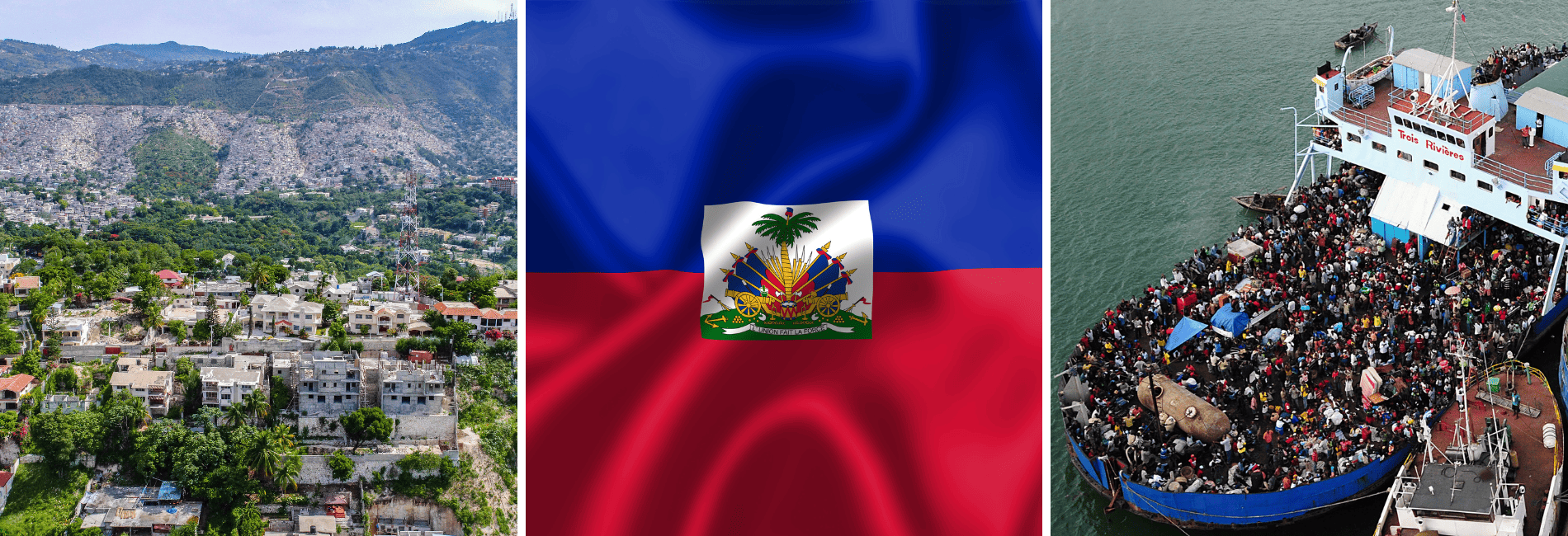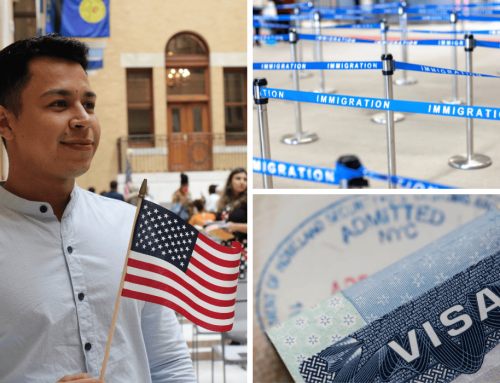
Why Haitians Are Fleeing Their Home and the Challenges They Face in the U.S.
Declaring independence in 1804, Haiti became the first free Black republic in the world. Two centuries later, it is a country of resilient people and exceptional island beauty. Sadly, after centuries of foreign intervention, occupation, and coerced debt, political instability, and natural disasters, this nation of 11.5 million people is also the poorest country in the Western Hemisphere. Over the past few months, the number of Haitians forced to flee their country and seek safety in the U.S. has grown rapidly.
The International Institute of New England has become New England’s leading resettlement provider for Haitians, now serving more than 3,000 Haitian individuals and families and expecting to welcome thousands more. But how did we get here? And what is life like for Haitians once they arrive in the U.S.? Here are 5 things to know about the crisis of Haitian displacement.
1. Haiti has suffered a long and complex history of foreign oppression, exploitation, and intervention.
As a result of this history, Haiti suffers from political instability and corruption; gang violence; drug trafficking; human trafficking, and high incidents of kidnapping, sexual and gender-based violence, and homicide. This has forced people to leave Haiti by the hundreds of thousands.
2. Haiti has been plagued by devastating natural disasters, which have killed hundreds of thousands and displaced millions.
In January of 2010, Haiti experienced its most devastating natural disaster to date. A large-scale earthquake killed more than 220,000, injured 300,000, and displaced 1.5 million people. Then, in 2021, another earthquake rocked the southern part of the country, killing 2,000 people and displacing tens of thousands more. Days later, a tropical storm wreaked more havoc in that part of the nation. The mass destruction of these natural disasters has caused enormous humanitarian need. While many countries have stepped up to provide foreign aid, it has been significantly mismanaged by nongovernmental associations.
3. Water scarcity and famine is worsening by the day and now impacts millions of Haitians nationwide.
Haiti is a small island with a massive population for its size. More than 50% of Haitians are currently experiencing food insecurity, and nearly a quarter (22%) of the nation’s children are considered malnourished. In addition, two-thirds of the population lack proper sanitation services, and a third does not have access to clean water. Widespread famine, water scarcity, and weak infrastructure are the result of a history of underdevelopment. Natural disasters have worsened conditions, as they have disrupted agriculture country-wide.
4. For Haitians who make the difficult decision to leave their home country, the journey to enter the U.S. is perilous – and not always successful.
The journey to the U.S. border is long and difficult. Many Haitians fly first to South America and then travel through Central America, enduring long stretches by bus and on foot. Others attempt the journey by boat, leaving directly from Haiti. There have been numerous instances of these boats carrying hundreds of migrants capsizing, leading to injuries and drownings.
For migrants who are able to make it to the southern U.S. border, entrance has become more challenging with the introduction of a new asylum rule from the Biden Administration earlier this year, prohibiting Haitians to seek asylum unless they 1) were granted prior permission to come to the U.S. via a DHS-approved parole process, 2) were able to make an appointment to present themselves at the border using the smartphone app CBP One, or 3) previously sought asylum in a country or countries through which they traveled and were denied. These tighter restrictions significantly limit the ability of Haitians—and all migrants—to seek safety in the U.S.
5. Once in the U.S., Haitians receive limited support.
Most Haitians entrants are granted a “parole” status when admitted to the U.S., which allows them to remain legally for a period of up to two years, access limited financial assistance, and apply for public benefits through resettlement agencies like IINE. Many Haitian families spend their life savings on their journey to the U.S. and arrive with no resources, homeless and forced to stay with acquaintances or other community members in crowded living spaces, or to stay in shelters. While eager to secure jobs, many Haitian entrants do not have the means to hire an attorney to support their employment authorization applications. Many are denied, and many others experience delays of up to one year for approval. Work authorization petitions for Haitian applicants are being processed much slower than for other arriving populations.
• • •
More than one million people of Haitian descent live in the U.S., and the third largest Haitian diaspora outside Haiti resides in Massachusetts. Haitians are integral to our culture, society, and economy. IINE is deeply disturbed by the United States’ treatment of arriving Haitians and is committing time and resources to providing services to enroll thousands of Haitians into benefits and services, advocating for just and timely immigration relief, and welcoming Haitian adults, children, and families with open arms.








